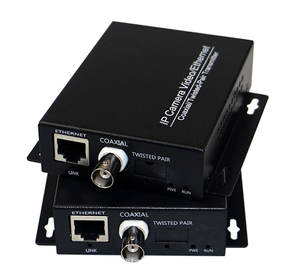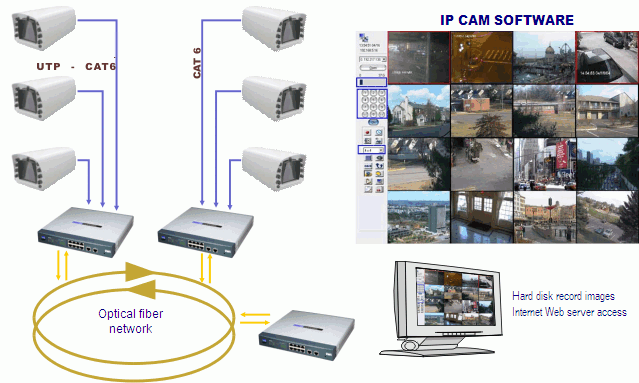The Benefits of Using CCTV Fibre Optic Cable for Reliable Video Transmission
The Benefits of Using CCTV Fibre Optic Cable for Reliable Video Transmission
Blog Article
Just How CCTV Cameras With Fiber Optic Result Boost Long-Distance Monitoring
CCTV video cameras furnished with fiber optic result stand for a substantial innovation in long-distance surveillance innovation, providing unparalleled advantages over traditional systems. By leveraging the homes of light transmission via fiber optics, these cams guarantee high-def video top quality remains intact across extensive distances while effectively reducing electromagnetic disturbance - cctv fibre optic cable.

Comprehending Fiber Optic Technology
Fiber optic modern technology is significantly utilized in long-distance tracking applications as a result of its remarkable capability for information transmission. This modern technology uses slim strands of glass or plastic fibers to send information as light signals, significantly decreasing the attenuation typically related to traditional copper cords. The fundamental residential or commercial properties of optical fiber enable the transmission of big quantities of data over significant distances without loss of top quality, making it an optimal option for applications requiring reliable interaction.
The principle of total inner representation helps with the efficient transmission of light within the fiber, ensuring high transmission capacity and rate. Unlike electrical signals in steel cables, optical fiber are unsusceptible to electro-magnetic disturbance, enhancing the integrity of information transmission. This characteristic is particularly beneficial in atmospheres with high degrees of electric noise, such as industrial settings or metropolitan locations.
Additionally, fiber optic cables are lighter and much more flexible than their copper counterparts, which streamlines installation and reduces architectural load. With their toughness and resistance to environmental factors, optical fiber are well-suited for outdoor applications, consequently prolonging the reach of keeping an eye on systems. As an outcome, fiber optic innovation is becoming a cornerstone in modern surveillance remedies, efficiently resolving the challenges of long-distance tracking.
Benefits of Fiber Optic CCTV
Making use of fiber optic innovation in CCTV systems uses countless advantages that boost surveillance capacities. One of the key advantages is the capacity to transfer high-definition video over cross countries without substantial signal destruction. Unlike typical copper cable televisions, optical fiber can preserve video quality over comprehensive runs, making them ideal for large properties or remote tracking areas.
Additionally, fiber optic cords are less susceptible to electromagnetic interference, which can misshape signals in traditional systems. This ensures clearer pictures and undisturbed service, essential for safety and security surveillance. Additionally, fiber optics are naturally extra safe and secure, as obstructing signals calls for specific devices, therefore offering an added layer of security versus unauthorized accessibility.
The light-weight and portable nature of fiber optic cords also streamlines installation, enabling much easier routing through limited areas and minimizing overall labor prices. Their toughness makes them immune to environmental aspects such as moisture and temperature changes, extending the lifespan of the monitoring system.
Finally, fiber optic systems can support a majority of electronic cameras on a solitary network, optimizing sources and providing scalability for future development. These advantages make fiber optic CCTV systems an exceptional selection for modern security demands.
Contrast With Standard Equipments
When comparing CCTV visite site systems, traditional arrangements often drop short in a number of crucial locations, particularly in regards to range and signal stability. Conventional coax systems typically deal with substantial signal degradation over cross countries, restricting efficient monitoring ranges to about 300 feet (cctv fibre optic cable). Yet limit, image quality diminishes, bring about possible blind areas and decreased monitoring performance
On the other hand, fiber optic systems preserve signal stability see this website over a lot greater ranges, often going beyond numerous miles without loss of high quality. This is greatly due to their capability to send data as light signals, which are less prone to electro-magnetic disturbance than electrical signals used in traditional systems.
Furthermore, typical systems call for more extensive maintenance and troubleshooting as a result of their vulnerability to environmental aspects such as wetness and electromagnetic noise. Fiber optic systems, on the other hand, deal improved durability and lower maintenance prices, as they are less prone to damage.
Applications in Long-Distance Monitoring
The advantages of contemporary CCTV systems in keeping signal integrity over fars away open up a vast array of applications for long-distance monitoring. One significant application remains in metropolitan surveillance, where communities release fiber optic CCTV systems to keep an eye on public areas, enhancing safety and security and discouraging criminal activity. These systems supply constant, high-quality video clip feeds that are critical for effective law enforcement and emergency situation action.
Another crucial application remains in industrial settings, where remote tracking of manufacturing processes and hazardous locations is necessary. Fiber optic CCTV can endure harsh settings and send information over cross countries without loss of top quality, permitting real-time oversight and decreasing threats to workers.
In addition, essential infrastructure such as flight terminals, trains, and pipelines gain from long-distance CCTV tracking. Protection groups can oversee big locations from streamlined control areas, guaranteeing quick feedback to any kind of occurrences.
Moreover, in agricultural setups, farmers use long-distance CCTV to monitor crops and animals, aiding to improve productivity and protection. In general, the convenience and integrity of fiber optic CCTV systems make them important across various markets, allowing extensive surveillance solutions tailored to particular requirements.
Future Trends in Security Innovation
Exactly how will improvements in technology reshape the landscape of surveillance? The future of surveillance innovation is positioned for considerable makeover, driven by innovations such as expert system (AI), artificial intelligence, and edge computer. These modern technologies make it possible for real-time information evaluation, enabling for quick recognition of prospective risks and enhanced situational awareness.
AI-powered analytics will certainly enhance the accuracy of facial recognition systems, lowering incorrect positives and making it possible for much more reliable monitoring of people. In addition, the integration of Web of Things (IoT) gadgets will promote a smooth network of interconnected monitoring systems, improving surveillance capabilities throughout huge locations.
An additional trend is the shift in the read direction of cloud-based storage services, which offer scalable information administration and access. This will certainly allow organizations to keep vast amounts of video data without the limitations of physical storage space, while ensuring that details is easily retrievable.

Final Thought
Finally, CCTV cams outfitted with fiber optic output represent a substantial improvement in long-distance surveillance abilities. The use of fiber optic innovation makes certain high-definition video transmission over considerable distances without top quality destruction, while additionally providing immunity to electromagnetic interference. The light-weight and flexible nature of these systems facilitates structured installment and resource optimization. As surveillance technology remains to evolve, the adoption of fiber optic services will likely play a critical function in boosting protection throughout diverse applications.
Report this page